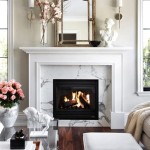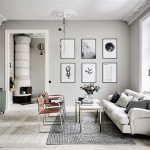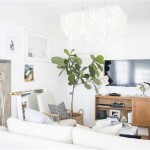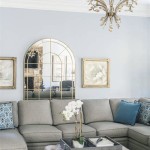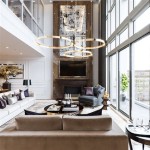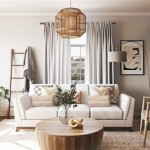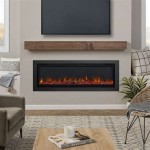Unique Living Room End Tables: A Guide to Style and Function
The living room, often considered the heart of the home, is a space designed for relaxation, entertainment, and conversation. Within this space, the placement of furniture plays a critical role in establishing both the aesthetic and functionality of the room. End tables, in particular, are indispensable components of a well-designed living room. Beyond their utilitarian purpose of providing a surface for lamps, drinks, or books, unique end tables can serve as striking focal points, adding personality and visual interest to the overall décor.
Selecting the right end tables involves careful consideration of various factors, including the overall style of the living room, the available space, the intended function of the tables, and the desired aesthetic impact. Unique end tables transcend the ordinary, offering an opportunity to express individual taste and enhance the room's character. This article explores various types of unique living room end tables, delving into their materials, styles, and potential applications, aiming to provide guidance in selecting the perfect pieces to complement any living space.
Material Matters: Exploring Diverse End Table Materials
The choice of material significantly influences the appearance, durability, and overall feel of an end table. A wide array of materials are available, each possessing distinct characteristics that lend themselves to different design aesthetics. Understanding these characteristics is crucial for selecting end tables that align with the desired look and feel of the living room.
Wood, a timeless and versatile material, remains a popular choice for end tables. Different types of wood, such as oak, maple, walnut, and pine, offer varying grain patterns, colors, and levels of durability. Reclaimed wood end tables, crafted from salvaged lumber, introduce a rustic and eco-conscious element to the living room. These tables often feature unique imperfections and markings that tell a story, adding character and charm. Conversely, sleek, modern end tables may be constructed from engineered wood, finished with high-gloss lacquer or veneer for a contemporary aesthetic.
Metal end tables offer a contrasting aesthetic, providing a modern or industrial touch. Steel, iron, and aluminum are common choices, often finished in powder-coated colors or left with a raw, exposed look. Glass-topped end tables, combined with metal frames, create a light and airy feel, ideal for smaller living rooms. The transparency of the glass allows light to pass through, enhancing the sense of space. Metal end tables can also be intricately designed, featuring decorative cutouts or sculptural forms, adding an artistic element to the room.
Stone, such as marble or granite, provides a luxurious and elegant option. These materials are inherently durable and resistant to scratches and stains. Marble-topped end tables, with their unique veining patterns, exude sophistication and can serve as statement pieces. Concrete end tables, a more contemporary choice, offer a minimalist and industrial aesthetic. Their weighty presence and textured surface create a sense of solidity and grounding.
Beyond these traditional materials, unique end tables may incorporate unconventional elements such as acrylic, resin, or even repurposed materials. Acrylic end tables provide a modern, almost invisible look, allowing other design elements to take center stage. Resin end tables can be molded into various shapes and colors, offering endless possibilities for creative expression. Repurposed materials, such as vintage suitcases, stacked books, or even old tires, can be transformed into unique and eye-catching end tables, adding a quirky and personalized touch to the living room.
Styles and Designs: Finding the Perfect Aesthetic Match
The style of an end table should complement the overall design scheme of the living room. From classic to contemporary, a wide range of styles are available, each possessing distinct characteristics and visual appeal. Understanding these styles is essential for selecting end tables that seamlessly integrate into the existing décor.
Traditional end tables often feature ornate details, such as carved legs, decorative moldings, and rich wood finishes. These tables evoke a sense of timeless elegance and are well-suited for formal living rooms. Styles like Queen Anne, Chippendale, and Victorian are common examples, characterized by their graceful curves and intricate craftsmanship. Traditional end tables often incorporate elements of symmetry and balance, creating a sense of harmony and refinement.
Modern end tables embrace clean lines, minimalist forms, and functional design. These tables prioritize simplicity and practicality, often featuring geometric shapes and neutral colors. Mid-century modern end tables, a sub-category of modern design, are characterized by their organic shapes, tapered legs, and use of natural materials. Modern end tables often incorporate innovative features such as built-in storage, adjustable heights, or integrated lighting.
Rustic end tables celebrate the beauty of natural materials and imperfect finishes. These tables often feature rough-hewn wood, exposed hardware, and distressed surfaces. Farmhouse style end tables, a popular type of rustic design, evoke a sense of warmth and comfort, incorporating elements of country living. Rustic end tables are well-suited for creating a cozy and inviting atmosphere in the living room.
Eclectic end tables offer a unique opportunity to mix and match different styles and materials, creating a personalized and visually stimulating space. These tables often incorporate unexpected combinations of patterns, colors, and textures. An eclectic living room might feature a vintage end table paired with a modern sofa, or a metal coffee table juxtaposed with a plush rug. The key to successful eclectic design is to create a sense of cohesion and balance, despite the diverse elements.
Beyond these broad categories, various other styles of end tables exist, including bohemian, coastal, industrial, and glam. Bohemian end tables often feature intricate patterns, vibrant colors, and natural materials such as rattan and bamboo. Coastal end tables evoke a sense of relaxation and tranquility, incorporating elements of the beach and sea. Industrial end tables are characterized by their raw materials, exposed hardware, and utilitarian design. Glam end tables exude luxury and sophistication, featuring metallic finishes, mirrored surfaces, and opulent detailing.
Functionality and Features: Maximizing Utility and Convenience
While aesthetics are important, the functionality of an end table should not be overlooked. Consider the intended use of the table and choose features that enhance its utility and convenience. End tables can offer a range of functionalities, from providing surface space to offering storage solutions.
Storage is a key consideration when selecting end tables. End tables with drawers provide concealed storage for remote controls, magazines, and other small items, helping to keep the living room clutter-free. End tables with shelves offer open storage for books, decorative objects, or plants. Some end tables feature a combination of drawers and shelves, providing versatile storage options. Consider the amount of storage needed and choose end tables that offer sufficient capacity.
The size and height of an end table should be proportionate to the surrounding furniture. The height of the end table should be roughly the same as the armrest of the sofa or chair it is placed next to, allowing for easy access to drinks or other items. The size of the table should also be considered in relation to the size of the room. Large end tables can overwhelm a small living room, while small end tables may get lost in a larger space. Consider the available space and choose end tables that are appropriately sized.
End tables with built-in features can enhance their functionality and convenience. End tables with integrated lighting provide a convenient source of illumination for reading or creating ambiance. End tables with USB charging ports allow for easy charging of electronic devices. Some end tables feature adjustable heights, allowing them to be used as laptop tables or serving trays. Consider the desired features and choose end tables that offer the necessary functionalities.
Mobility is another factor to consider, particularly for smaller living rooms or those that require flexible furniture arrangements. End tables with casters or wheels can be easily moved around the room, allowing for adaptable layouts. Lightweight end tables are also easy to reposition, making them ideal for spaces that frequently undergo changes in décor.
The surface material of the end table should also be considered in relation to its intended use. End tables used for serving drinks or snacks should be constructed from materials that are resistant to spills and stains. End tables used for displaying decorative objects should have a smooth and stable surface to prevent items from tipping over. Consider the intended use of the table and choose a surface material that is appropriate.

50 Unique End Tables That Add The Perfect Living Room Finish

50 Unique End Tables That Add The Perfect Living Room Finish

50 Unique End Tables That Add The Perfect Living Room Finish

50 Unique End Tables That Add The Perfect Living Room Finish
:max_bytes(150000):strip_icc()/deomesticblonde-4e0abc09e17f43449fe2ff1b7a2c4c10.jpg?strip=all)
14 Diy End Table Plans

50 Unique End Tables That Add The Perfect Living Room Finish

Side Table Decor Ideas 33 Best Stylish Functional End Tables For Your Home Parachute Blog

50 Unique End Tables That Add The Perfect Living Room Finish

End Side Tables

Unique Coffee Side Tables To Save Your Boring Living Room Rules Make Them Work Together

